Table of Contents
A noun is a word that names a person, place, thing, or idea. Noun helps us talk about the world around us. They can be the subject or object in a sentence, making it easier to understand who or what we are talking about. Learning about types of nouns is important for using language well.
What is a Noun?
A noun is a word that names a person, place, thing, or idea. Words like cat, city, book, and happiness are all nouns. Nouns help us identify and talk about different parts of our world.
Examples Sentences:
The dog barked loudly.
She lives in a small village.
The book is on the table.
Types of Noun
- Common Nouns
- Proper Nouns
- Concrete Nouns
- Abstract Nouns
- Collective Nouns
- Countable Nouns
- Uncountable Nouns
Nouns can be classified into several types based on their characteristics and usage:
1. Common Nouns
These nouns are general names for a person, place, thing, or idea. They are not specific and are not capitalized unless they start a sentence.
- The dog barked all night.
- She bought a new car.
- He visited a small village
2. Proper Nouns
They are specific names for particular people, places, things, or ideas. Proper nouns are always capitalized.
- New York is a bustling city.
- Tom is my best friend.
3. Concrete Nouns
They are used to refer to things that can be perceived through the five senses (sight, hearing, touch, taste, smell). Concrete nouns are tangible and can be experienced physically.
- The dog chased its tail.
- She bought a new dress.
4. Abstract Nouns
These are used to refer to ideas, qualities, or conditions that cannot be perceived through the five senses. Abstract nouns represent concepts or feelings.
- Knowledge is power.
- They fought for justice.
5. Collective Nouns
They are referred to a group or collection of people, animals, or things considered as a single unit. Collective nouns can be singular or plural, depending on the context.
- The family went on vacation.
- The class started their project.
6. Countable Nouns
These are referred to things that can be counted easily. Countable nouns have both singular and plural forms, and they can be preceded by numbers or articles (a, an, the).
- She has three cats.
- He bought five books.
7. Uncountable Nouns
They are used to refer to things that cannot be counted individually. Uncountable nouns do not have a plural form and are usually not preceded by numbers or the indefinite articles (a, an).
- Knowledge is valuable.
- He spilled milk on the table.
8. Compound Nouns
Compound nouns are nouns made up of two or more words combined to create a single meaning. They can be written as one word (closed), separate words (open), or hyphenated (hyphenated).
- Notebook (closed)
- Ice cream (open)
- Father-in-law (hyphenated)
Example Sentences:
- Fatima bought a notebook for her English class.
- Bilal loves ice cream on hot days.
9. Possessive Nouns
A possessive noun shows ownership or belonging. It is formed by adding ‘s or just an apostrophe (‘) to the noun, depending on whether it is singular or plural.
Examples:
- Aisha’s book is on the table.
- The students’ classroom is spacious.
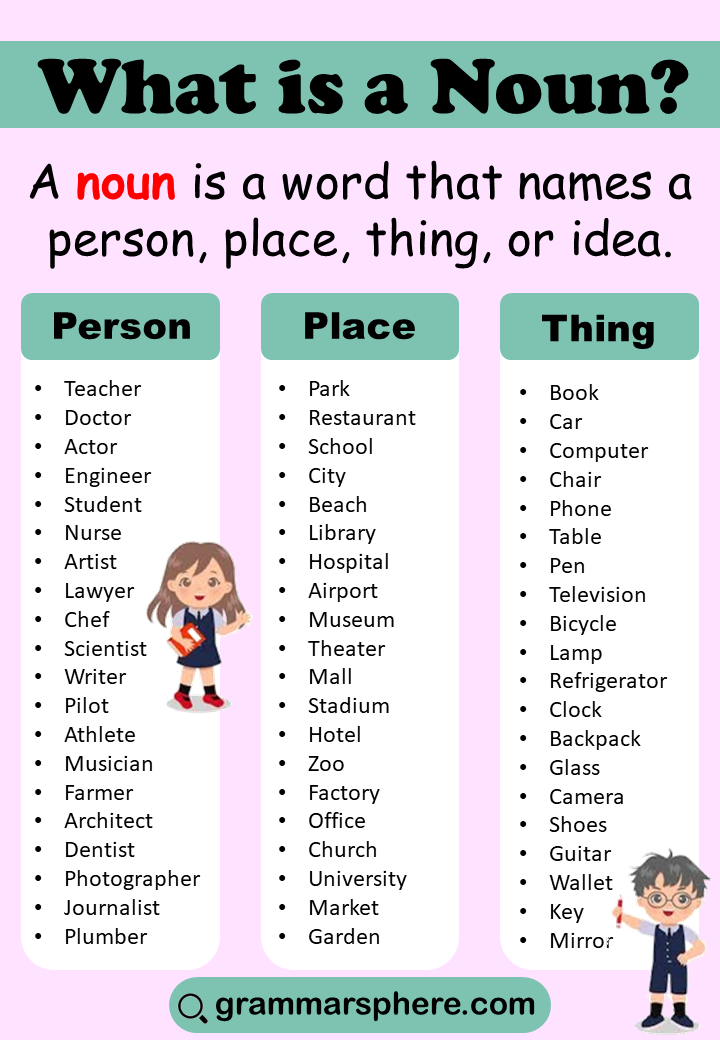
How are Nouns Used in Sentences?
1. Nouns as Subjects
When a noun is the subject, it performs the action in the sentence. It usually comes before the verb.
- The dog barks.
- The cat sleeps.
2. Nouns as Objects
Nouns can also receive the action of the verb. There are two main types of objects:
- Direct Object – receives the action directly.
- He writes a letter.
- She reads a book.
- Indirect Object – receives the direct object and tells to whom or for whom the action is done.
- She gave her friend a gift.
- He sent his mother a card.
- ❌ He writes letter a.
- ✅ He writes a letter.
Nouns vs. Pronouns
Nouns name people, places, things, or ideas.
Pronouns replace those nouns to avoid repetition.
Examples:
- Noun: Anna loves reading books.
- Pronoun: She loves reading books.
- Noun: The house is beautiful.
- Pronoun: It is beautiful.
- Noun: I saw Jack and Emily at the park.
- Pronoun: I saw them at the park.
Singular vs. Plural Nouns
What is a Singular Noun?
A singular noun refers to one person, place, thing, or idea. It’s used when talking about just one of something.
Examples:
Dog (This means one dog)
Cat ( this means one cat)
Lion ( this means one lion)
What is a Plural Noun?
A plural noun refers to more than one person, place, thing, or idea. In English, plural nouns are often formed by adding -s or -es to the end of the singular noun.
Examples:
Dogs (This means more than one dog.)
Books (This means more than one book.)
Houses (This means more than one house.)
Difference:
Singular nouns name one person, place, thing, or idea.
Plural nouns name more than one person, place, thing, or idea.
Rules for Forming Plural Nouns
| Rule | Singular | Plural |
|---|---|---|
| Add -s to most nouns | book | books |
| Add -es to nouns ending in -s, -sh, -ch, -x, -z | box | boxes |
| Change -y to -ies if preceded by a consonant | baby | babies |
| Add -s if -y is preceded by a vowel | toy | toys |
| Irregular plurals | child → children | man → men |
Examples of Singular vs. Plural Nouns
Singular: car → Plural: cars
Singular: bus → Plural: buses
Singular: city → Plural: cities
Singular: woman → Plural: women
Singular: mouse → Plural: mice
You May Also Like

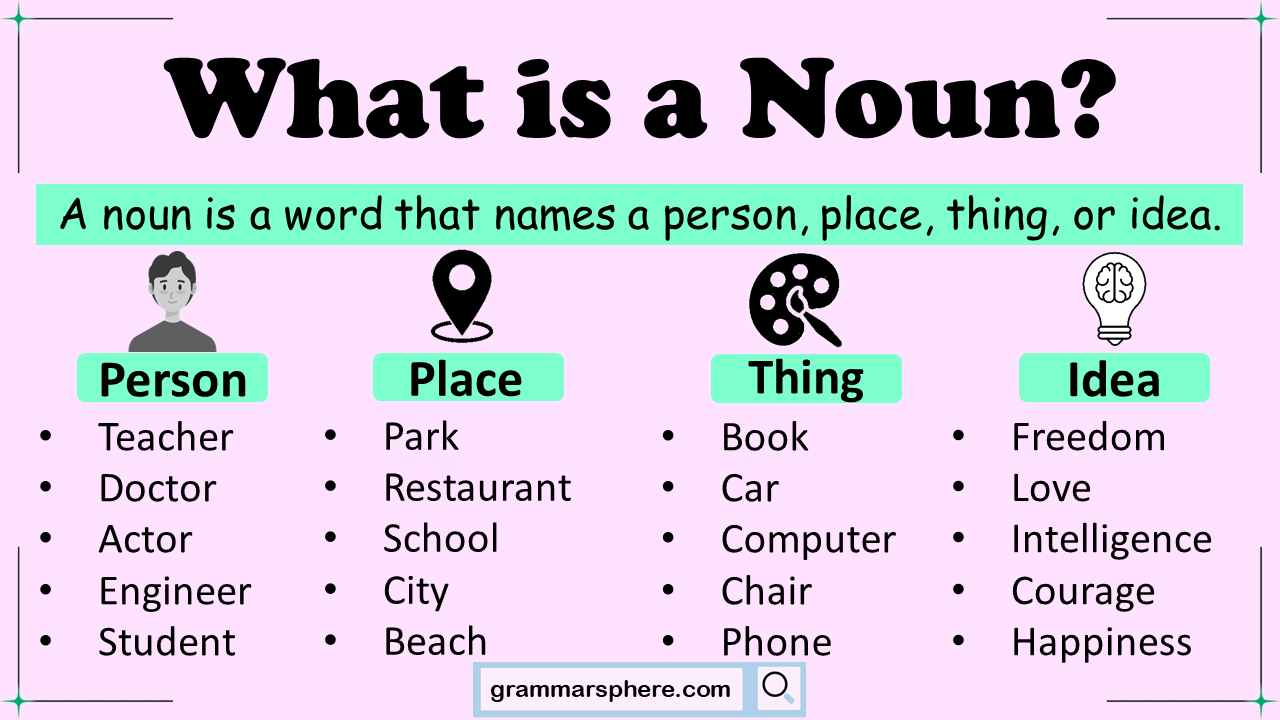
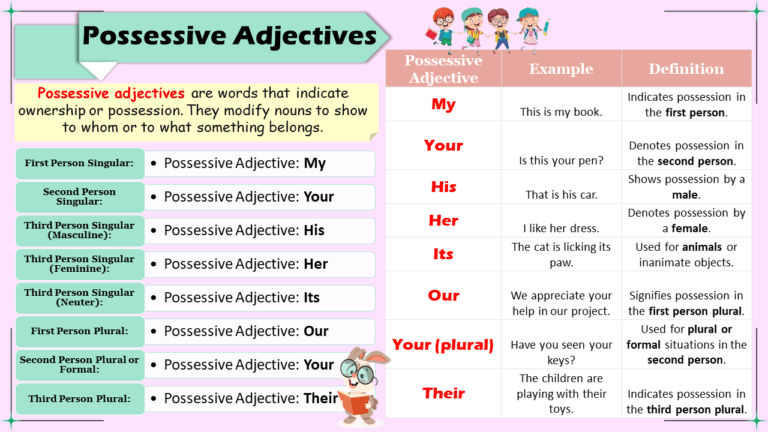
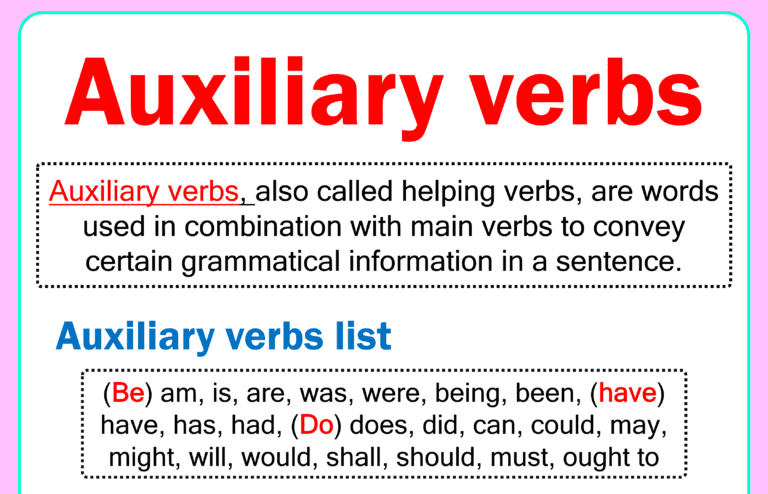
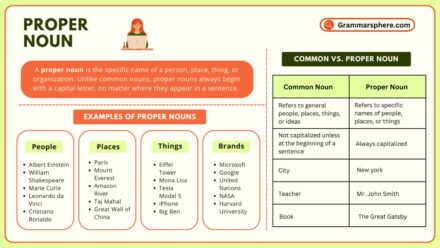
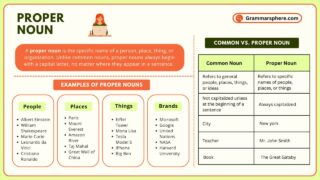

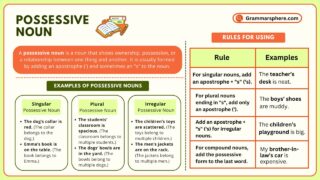

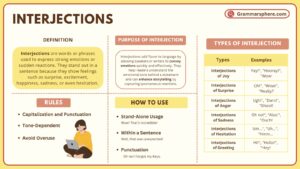
Leave a Comment